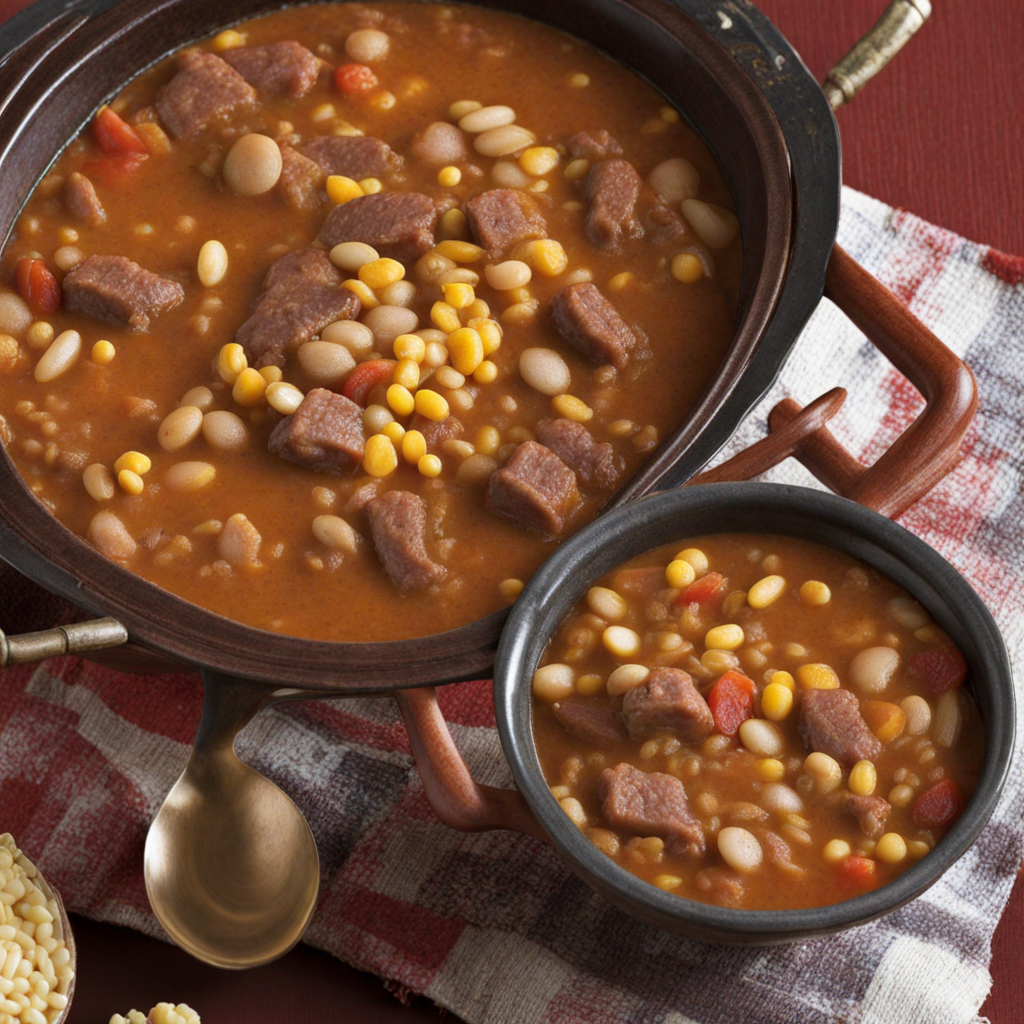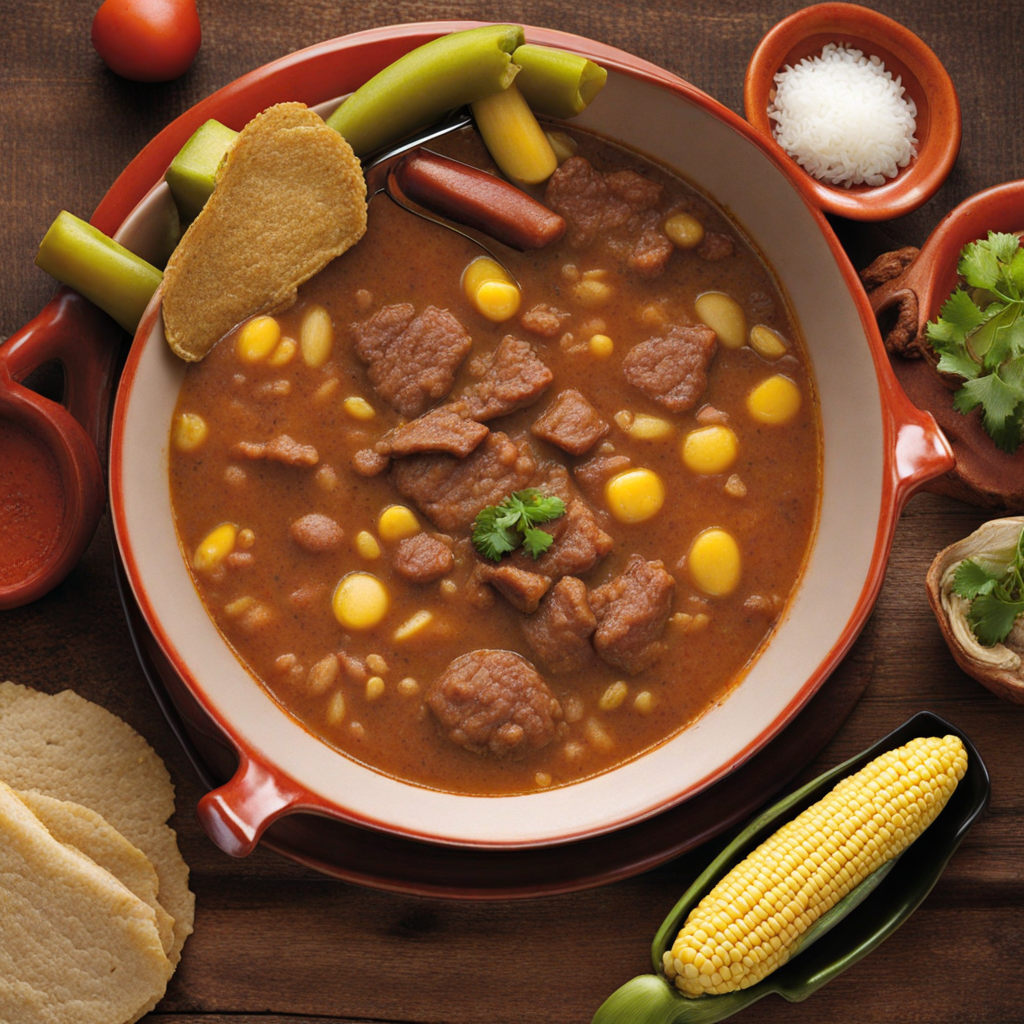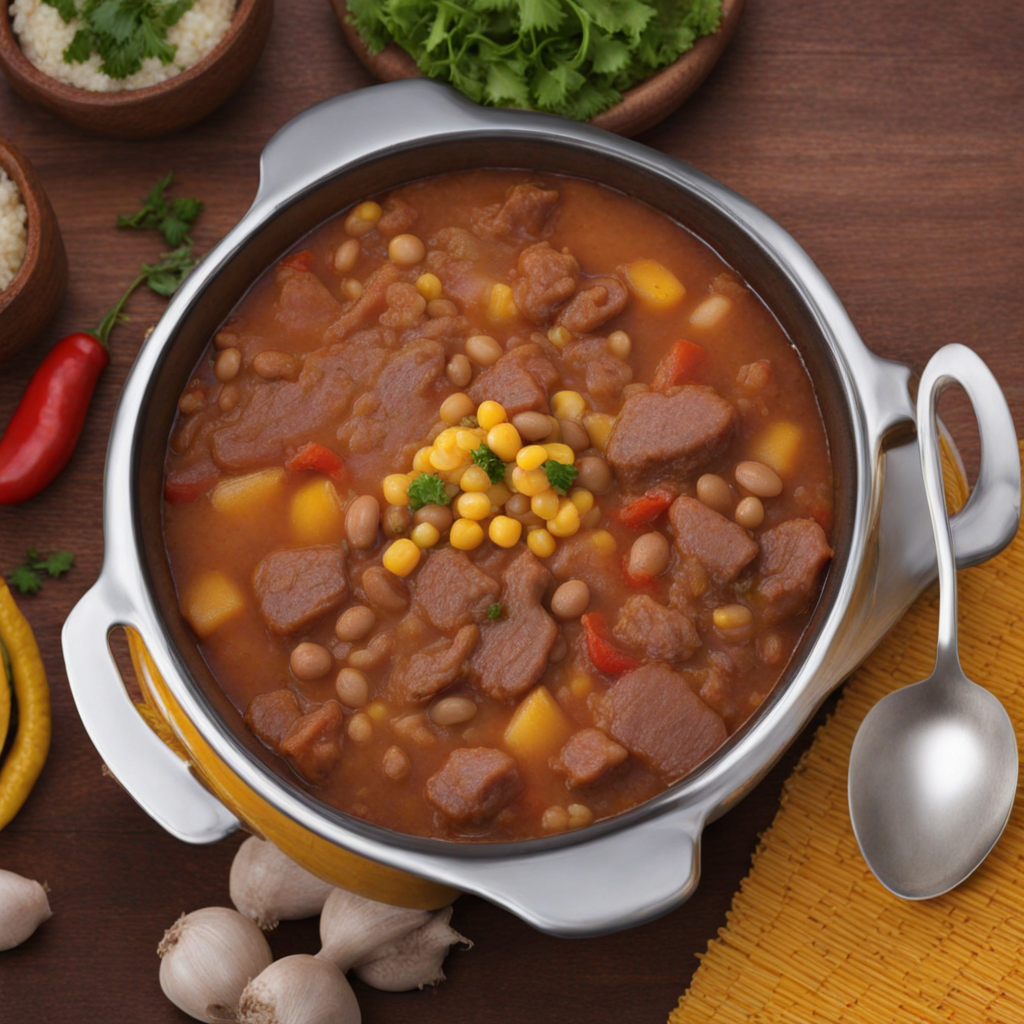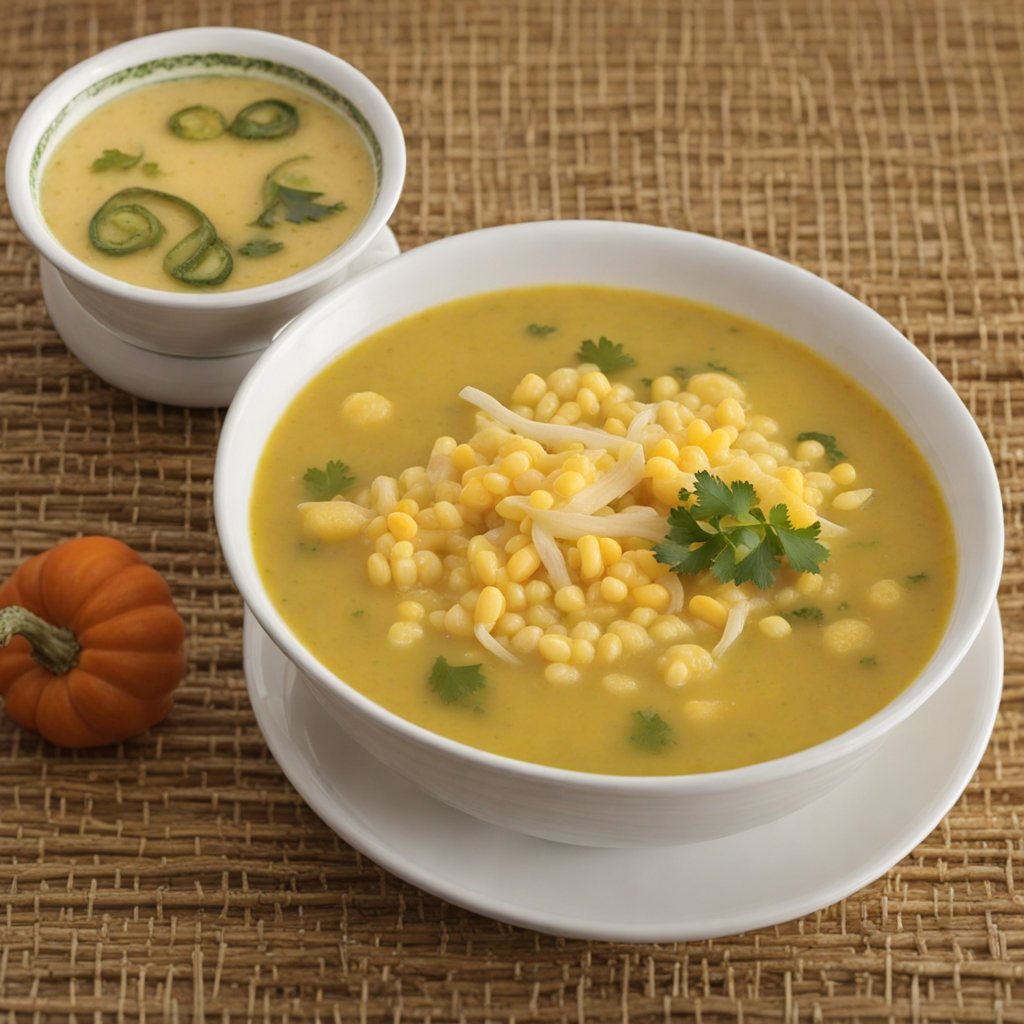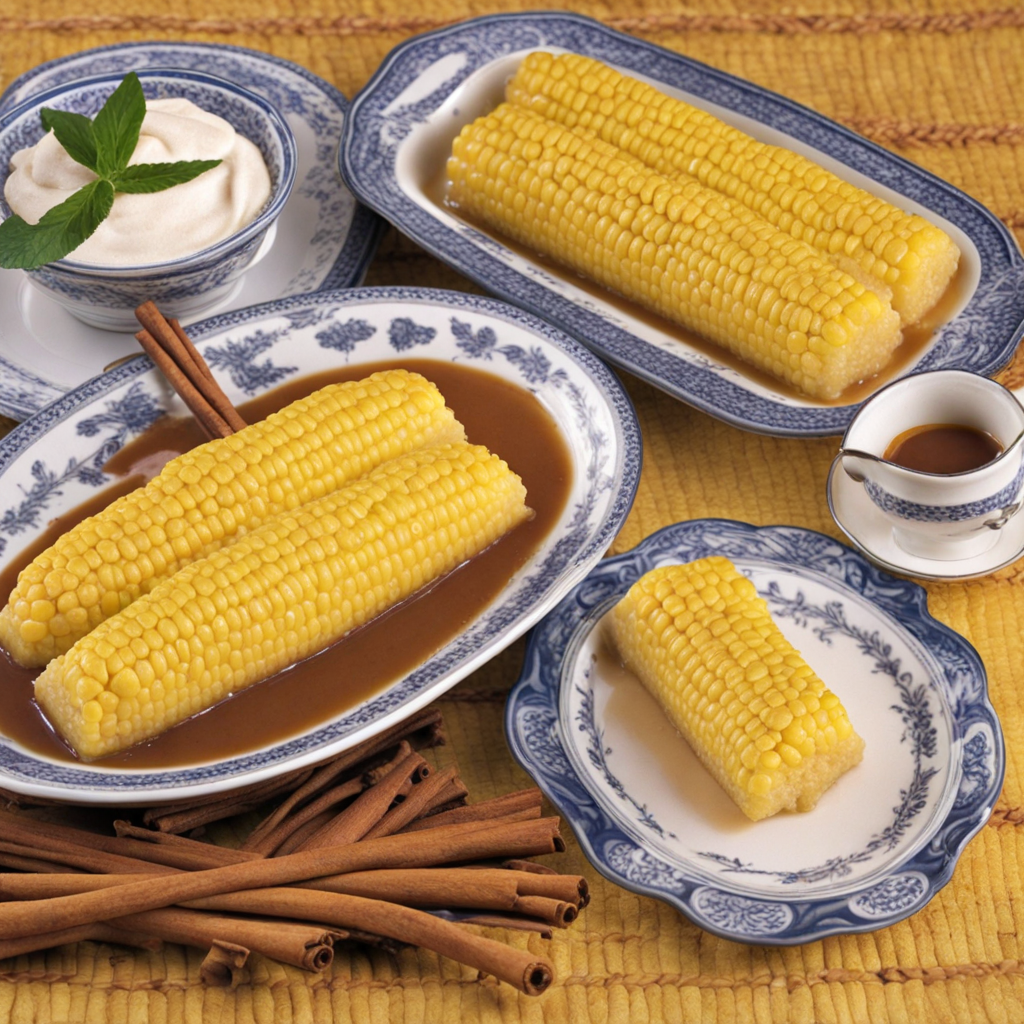Yopará
Yopará is a traditional Paraguayan dish that beautifully showcases the country’s rich culinary heritage. This hearty meal primarily consists of a blend of rice and a variety of meats, including beef, chicken, or pork, often accompanied by vegetables like bell peppers, onions, and tomatoes. The ingredients are typically simmered together to create a savory and aromatic base, which allows the flavors to meld and develop depth. The dish is renowned for its comforting texture and satisfying taste, making it a beloved staple among locals and a delightful discovery for those new to Paraguayan cuisine. One of the unique aspects of Yopará is the use of ‘pira’, a flavorful sauce that can be made from a mixture of spices, herbs, and occasionally chili peppers, giving the dish a distinctive kick. This sauce enhances the overall flavor profile, contributing to a balance of savory, spicy, and slightly tangy notes. The rice serves as the perfect canvas to absorb the vibrant flavors of the meats and sauce, while also providing a filling component that makes Yopará a complete meal. Often served with a side of fresh salad or pickled vegetables, Yopará captures the essence of Paraguayan home cooking, characterized by its simplicity and emphasis on fresh, local ingredients. Whether enjoyed at a family gathering or a local eatery, this dish invites diners to experience the warmth of Paraguayan hospitality through its rich flavors and communal spirit. Discovering Yopará is not just about tasting a new dish; it's about immersing oneself in the culture and traditions of Paraguay.
How It Became This Dish
Yopará: A Culinary Journey Through Paraguay's Cultural Heritage In the heart of South America lies Paraguay, a land rich in natural resources and cultural diversity. Among its culinary treasures is Yopará, a traditional dish that reflects the country's Indigenous roots, colonial history, and the blending of cultures over time. Yopará is more than just a meal; it is a symbol of Paraguay's identity, its people, and their connection to the land. Origins of Yopará Yopará finds its origins within the culinary practices of the Guaraní people, one of the major Indigenous groups in Paraguay. The Guaraní have long been known for their deep understanding of the local flora and fauna, which they utilized for sustenance. Traditionally, Yopará was a way to make use of the ingredients available in the region, particularly when cooking became necessary for communal gatherings or celebrations. The dish is typically prepared using a base of corn, one of the staple crops of the Guaraní, combined with meat—often chicken, beef, or pork—and seasoned with herbs, spices, and vegetables. The use of corn is significant, as it has been a central component of Paraguayan diets for centuries, serving not only as a food source but also as a cultural symbol. The Guaraní referred to corn as "maíz," which holds a sacred place in their mythology, often associated with fertility and abundance. Cultural Significance Yopará is more than just a nourishing meal; it is a cultural emblem that encapsulates the spirit of Paraguayan hospitality and communal living. Traditionally, it is prepared in large quantities for family gatherings, celebrations, and communal events. The act of cooking Yopará often involves family members coming together, sharing techniques and stories passed down through generations. This communal aspect is vital, as it strengthens bonds and reinforces shared cultural identities. In Paraguay, food is seen as a means of social connection. Yopará, with its rich flavors and hearty ingredients, serves as a centerpiece in many social gatherings, including religious festivals, national holidays, and family reunions. It is often accompanied by tereré, a traditional drink made from yerba mate, which further fosters a sense of community as it is shared among participants during meals. The dish's significance is also reflected in its versatility. While it retains its traditional roots, Yopará has evolved to incorporate various local ingredients and cooking methods, showcasing the adaptability of Paraguayan cuisine. Over time, variations of Yopará have emerged, reflecting regional preferences and the influence of immigrant communities, particularly those from Europe and Asia. Development Over Time As Paraguay underwent significant social and political changes, the development of Yopará mirrored these transformations. The arrival of Spanish colonizers in the 16th century introduced new ingredients, cooking techniques, and culinary styles. As a result, Yopará began to take on new dimensions, incorporating elements such as garlic, onion, and various spices that were not traditionally used by the Guaraní. The incorporation of these ingredients highlighted the fusion of Indigenous and Spanish culinary practices, a hallmark of Paraguayan cuisine. This blending is evident in the preparation of Yopará, where the traditional Guaraní methods of slow-cooking and communal eating combine with European flavors and techniques. This evolution is a testament to the resilience of Paraguayan culture, as it continues to thrive and adapt despite external influences. In the 20th century, as Paraguay became more integrated into the global economy, the culinary landscape began to diversify further. The influence of immigrants from other countries, including Germany, Italy, and Japan, introduced new ingredients and cooking styles that enriched the flavor profiles of traditional dishes like Yopará. This period saw the emergence of unique variations, with families experimenting with different meats, vegetables, and seasonings. Despite these changes, traditional Yopará remains a beloved dish, often prepared according to family recipes that have been handed down through generations. The preservation of these recipes is crucial in maintaining cultural heritage and identity in a rapidly changing world. Today, many Paraguayans take pride in their ability to prepare Yopará authentically, respecting the traditional techniques while also allowing for personal touches that reflect their own experiences and tastes. Yopará in Contemporary Paraguay In modern Paraguay, Yopará has gained recognition beyond familial settings. As the country increasingly embraces its culinary heritage, Yopará has found its place in restaurants and cultural festivals, where it is often featured as a representation of Paraguayan gastronomy. Chefs are now experimenting with traditional recipes, elevating Yopará to gourmet status while still honoring its origins. Culinary tourism has also played a role in revitalizing interest in traditional dishes like Yopará. Visitors to Paraguay are often keen to experience authentic Paraguayan cuisine, and Yopará serves as a perfect introduction to the country's rich culinary tapestry. Cooking classes and food tours have emerged, allowing participants to learn the history and preparation techniques of Yopará while connecting with local culture. Furthermore, the dish has become a symbol of national pride, often showcased in cultural events where Paraguayans celebrate their culinary heritage. During national holidays, Yopará is frequently prepared and shared among families, emphasizing its role as a unifying force within the Paraguayan community. Conclusion Yopará embodies the essence of Paraguay's cultural identity, weaving together threads of Indigenous traditions, colonial influences, and contemporary adaptations. As a dish that has evolved over time while maintaining its roots, Yopará serves as a reminder of the rich history and diverse influences that have shaped Paraguayan cuisine. It stands as a testament to the resilience of culture and the importance of food in fostering community and connection. Whether enjoyed at a family gathering, a festive celebration, or a gourmet restaurant, Yopará continues to nourish both body and soul, securing its place in the heart of Paraguay.
You may like
Discover local flavors from Paraguay


